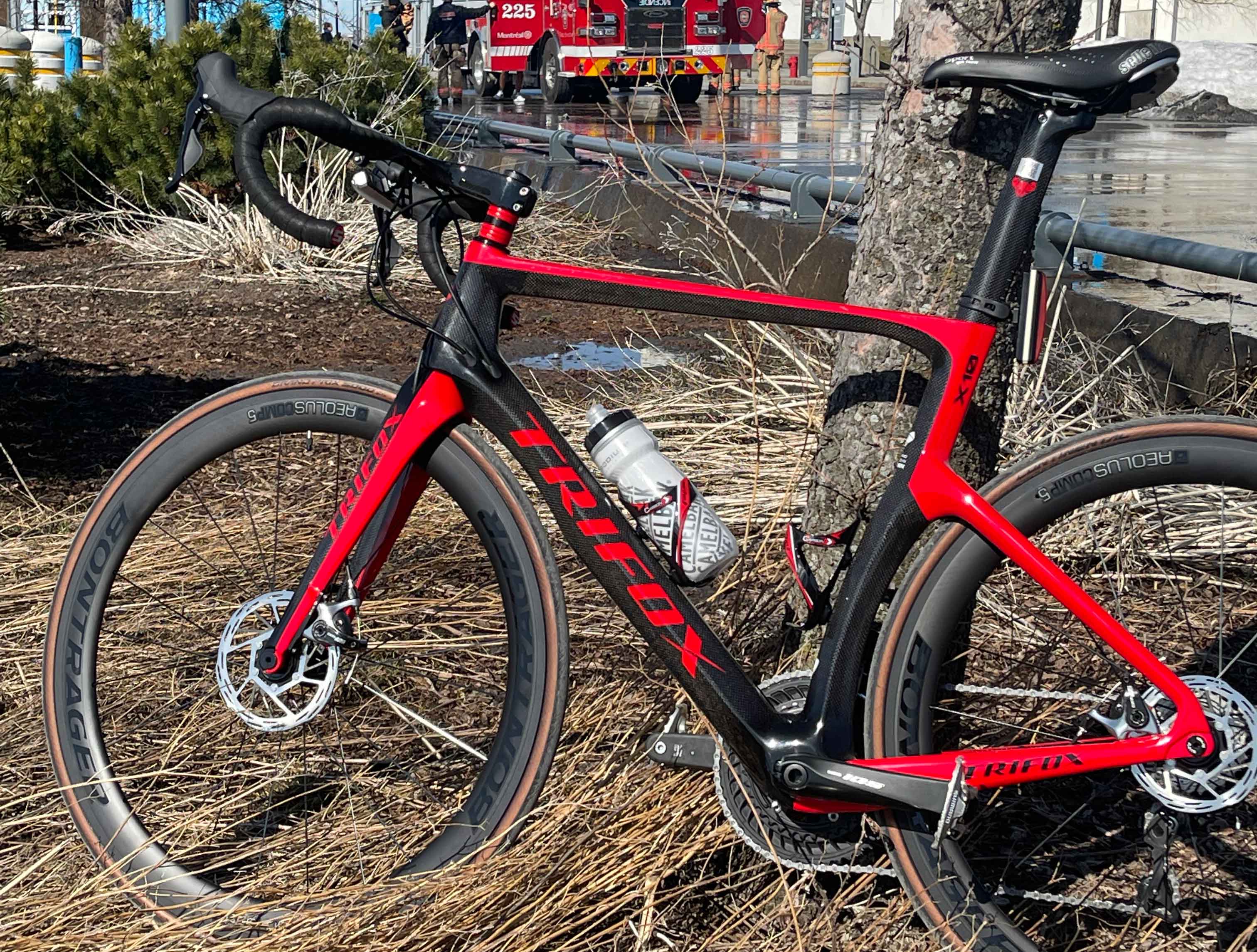
Road biking is a fun and exhilarating way to explore the great outdoors while getting a good workout. But if you're new to the sport, one of the most intimidating aspects can be figuring out what size road bike frame you need. Getting the right fit is crucial for comfort, efficiency, and preventing injury. The first step in finding the right road bike frame size is to measure yourself. Most bike manufacturers use the measurement of the length of the seat tube to determine frame size, usually measured in centimeters. To measure yourself, stand barefoot with your back against a wall, and measure the distance from the floor to your crotch. This measurement is known as inseam length and is a good starting point for choosing the right frame size. Once you know your inseam length, you can consult a road bike frame size chart. These charts typically list rider height and inseam length to recommend a frame size. It's important to remember that these charts are just a starting point, and riders may fall in between sizes or have different proportions that affect fit. It's always best to test-ride a bike before purchasing it to ensure a comfortable fit. In addition to frame size, it’s important to consider other factors that affect fit, such as saddle height and handlebar reach. Saddle height is the distance between the top of the saddle and the center of the bottom bracket, and can be adjusted by raising or lowering the saddle. Handlebar reach is the distance between the saddle and the handlebars and can be adjusted by changing the stem or handlebars themselves. One thing to keep in mind when it comes to frame size is that smaller frames tend to be more maneuverable and easier to handle, but they may not be as comfortable for long rides or for taller riders. Larger frames offer a more upright riding position and are better for taller riders, but can be less maneuverable. It’s all about finding the right balance of comfort and performance for your individual needs. If you're in the market for a new road bike frame, consider the Trifox 700C Carbon Road Bike Frameset X10. This frame is made from a high-rigid, lightweight carbon fiber combination that provides excellent performance and efficiency. It’s also fully customizable with adjustable seat and chainstay lengths to fit a wide range of rider sizes and preferences. Conclusion: Finding the right road bike frame size is essential for getting the most out of your cycling experience. By measuring yourself and consulting a size chart, you can find a starting point for choosing the right size frame. However, it's important to remember that fitting is an individual process, and other factors like saddle height and handlebar reach can also affect comfort and performance. By taking the time to make adjustments and test-ride different options, you can find the perfect fit for your needs.
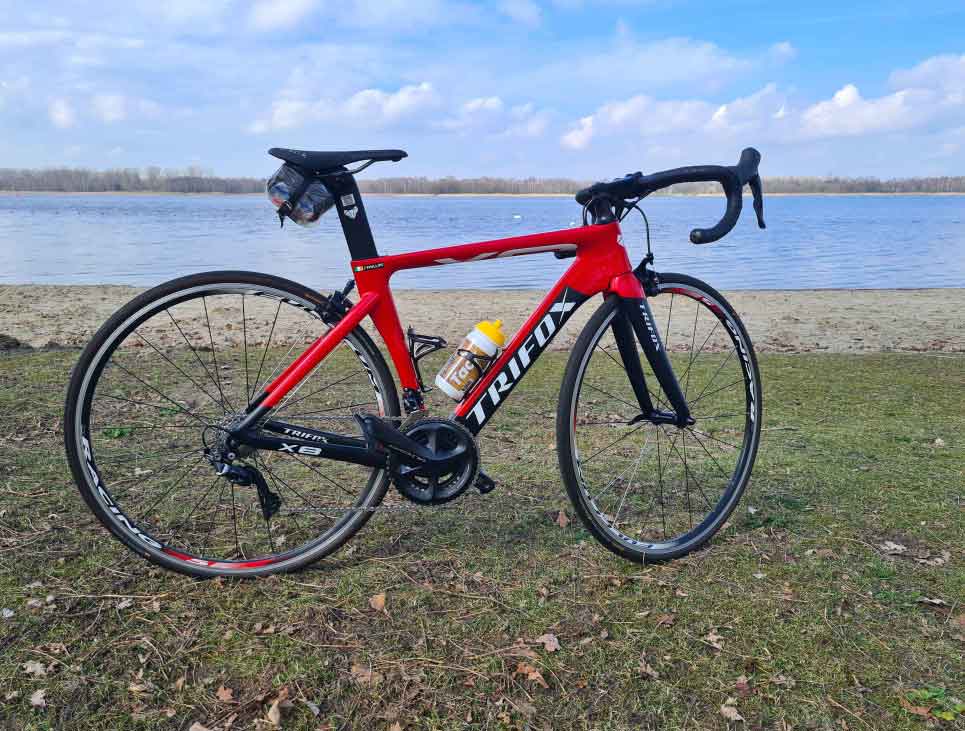
Are you in the market for a new road bike and considering an aero frame? Look no further as we dive into the details of the 700C AERO Carbon Road Bike Frameset X8. With its innovative design, it's no wonder that more and more people are opting for an aero road frameset to improve their performance. 1. The Benefits of Choosing an Aero Frame Road Bike Aerodynamics play a huge role in cycling as wind resistance can significantly slow you down. With an aero frame road bike, you can reduce your drag and increase your speed. The design of the frame is not only meant to be visually appealing but also to streamline your ride. By cutting through the wind, you'll save energy, increase your efficiency, and ultimately move faster on the road. 2. Features of the 700C AERO Carbon Road Bike Frameset X8 This frameset boasts a carbon fiber integrated molding process, creating a strong and lightweight frame. The three-dimensional guide type integrated aero pipe type helps to reduce wind resistance further. Plus, the internal routing aerodynamic propel design ensures cables and wires are hidden away from the wind, making it an even smoother ride. What makes this particular frameset stand out is the special processing method of carbon fiber. It creates a visually appealing and seamless finish that other materials can't achieve. The frame has an incredible sense of strength and stiffness that will make sure all your energy is put into the pedals. 3. A Combination of Sports and Equipment Aesthetics The team behind the 700C AERO Carbon Road Bike Frameset X8 put a lot of thought into the design. Not only is it functional and efficient, but it is also a beautiful piece of equipment to look at. The aesthetics blend well with the sport itself, making you feel powerful and confident while riding. 4. Why the 700C AERO Carbon Road Bike Frameset X8 is a Top Pick The 700C AERO Carbon Road Bike Frameset X8 is the perfect choice for any cyclist looking to improve their speed and performance. Its aerodynamic design, combined with top-quality build materials, creates a frameset that will help take your cycling to new heights. The seamless finish and beautiful aesthetics are just the icing on the cake. Plus, with internal routing and a sturdy frame, you will have a reliable piece of equipment for years to come. Conclusion: In conclusion, choosing an aero frame road bike can have major benefits for cyclists looking to improve their performance. The 700C AERO Carbon Road Bike Frameset X8 is a top pick for this type of bike and for good reason.Boasting a strong and efficient design, it's the perfect combination of form and function. With its seamless finish and reliable build, it'll be a piece of equipment that you'll be proud to show off on any ride. Take your cycling to new heights with the 700C AERO Carbon Road Bike Frameset X8.
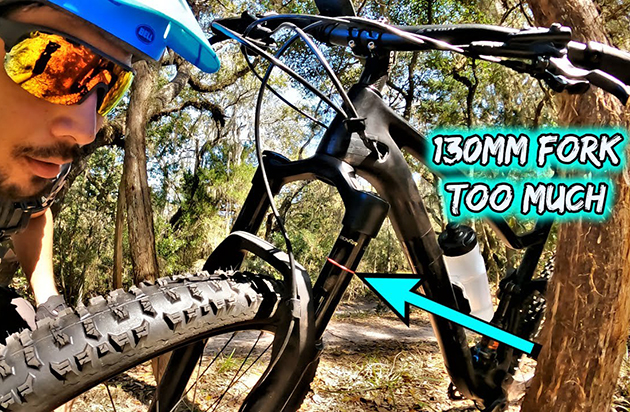
what is up people how are you guys doingso you guys know that i over forked my trifox cross country slash down country chinese carbon mountain bikewhatever you guys want to call iti'm so used on riding it with a manitou mark or 100 millimeter fork manitou markor it's fine you know until it started giving me issues so i over forked it with my rockshox revelation 130 millimeter forki actually been testing it out and the fork is actually you know really good i really like it but the pedal efficiency is goneyou know 130 millimeters going downhillwell we don't really have downhill here in floridabut you know you get the point going down and turningi feel like i actually got a super nice trail bike you know but again it's not that efficientso here's the writing video and before you guys start commenting that oh how come youso fast well if i'm writing and filming i normally stop every once in a while so i check the footagemaybe two to three minutes that two to three minutes will actually give me enough time to rest you know to lower my heart rateand after that i am ready to hammer it again yeah that's why i'm super fast in these videos plusyou know i mean i only filmed the the cool stuff not the lame stuffso if you guys want to check out the entire lap me riding this traillet me know down in the comments belowso next time i'll click the record buttonand i'm just gonna hammer the entire trail see that way you guys can see how slow i ambut i actually ride faster with the group because if i'm riding with a groupwe don't stop we only stop if we got mechanical issues likeyou know somebody got a flat or something like thatso rockshox revelation fork on my trifox mfm 100 it's okaythe bike survived i've been hitting some drops on it just a little bit you know not too highbut yeah i think it's doable so yeah here's the the ride video check it out comment down belowwhat you guys think about it and enjoy[riding time]130 millimeter fork on a super cross country traillet's do itit's so dry here todayit's super sandynormally i crash here when it's hotbecause it's just it's so sandy thatyou know i keep sliding all over the placei had to hit the brakes thereall right let's see the suspensionlet me check the forkso far i still got approximately an inch and a half of travel left on my fork suspensionso i can feel it is too comfortable it's just every time i pedal i feel like the front is just bobbing so muchso 130 millimeters it's just too much for this trailpersonally i think 110 millimeter travel bike is perfect around here in floridayou know that's just me that's my opinion130 millimeter it's just it is not efficient i'll give you that it's pretty comfortable but[riding time]i like this spot right herea little bit of flowoh man it's so leafy i am scared to turnit's like no matter how creepy my tire isit's just i can't trust them 100 you knowbecause there's no berms herea pedal pedal pedaland guess whatthere's a hikerall that energy's gone okay here we gocobblestone climbget up there go oni can feel itit is not that efficient on climbinggoing downit's all right though againit's kind of comfybut you know whati think i'll stick with 120 millimeterscome on let's get itgoing a little too fast right hereoh man it turns real goodlonger forks i guessbetter handlingi don't knowcomment down belownot surea lot of flats hereit'll make you strong though because you're going to be pedaling a lotit's like 95 of the time you're pedalingthese turns are deadlyincoming rootsfirst lap donethat one is a solid ride right therethis place is busyi did not use all my travelstill got an inch and a half of travel left on my forkwell since you made it all the way to the end of this videomight as well subscribe to my channel if you haven't done it yet and stay tunedbecause i am about to install the rockshox sid select to my trifox mfm carbon mountain bikeso yeah thanks for watching and i guess that's about it don't forget to like comment subscribekeep pedaling ride safe and i will see you guys in my next videoClick here to buy the Trifox Full Suspension Carbon MTB Frame MFM100Check the Trifox Mountain Bike Frame MFM100 Review video here
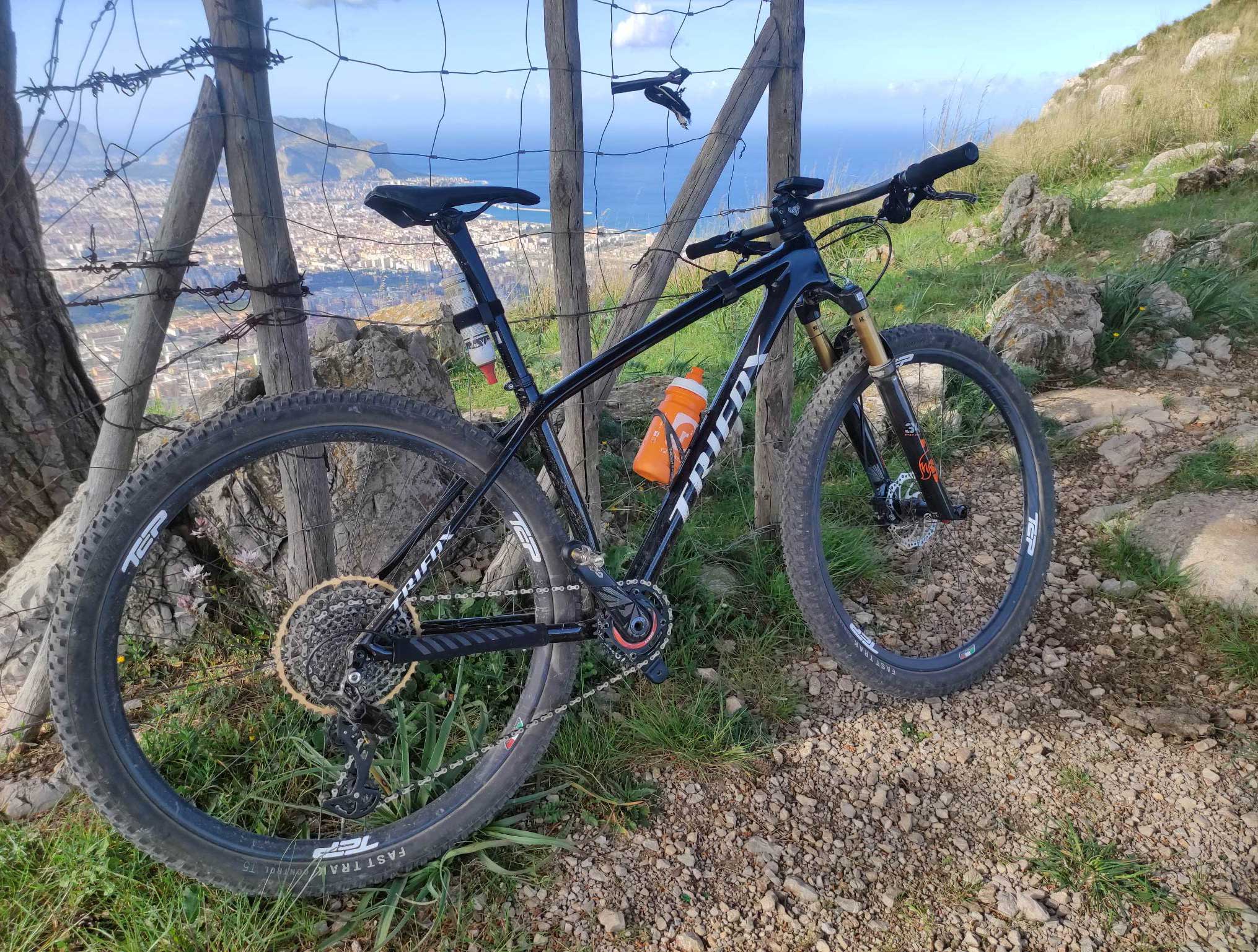
The hub of your bike is an essential part that is often overlooked. Many people focus on the bike frame, wheels, or tires, but the hub plays an important role in the overall performance of your bike. If you're a mountain biker looking for a reliable and high-quality hub, look no further than the Trifox Bike Hub M821 Boost. 1. Design Features: The Trifox Bike Hub M821 Boost for MTB is designed to give you outstanding performance on the trail. It features a 6-bolt disc brake system that ensures your bike stops quickly and safely. The hub is also equipped with 14-gauge spokes, 28 holes, and straight pull spokes, which ultimately enhances the stability and durability of the hub. The body of the hub is manufactured using high-end materials and techniques such as 5-axis CNC machining. This not only makes it attractive to look at but also highly functional in performance. 2. Strong Magnet: One of the most outstanding features of this hub is its use of strong NdFeb magnets. This ensures that the hub never gets demagnetized, even after constant use. Consequently, you can be confident that your bike will always be in excellent working condition throughout your rides. 3. Standard and Optional Teeth: Another benefit of this hub is that it has a standard 36T teeth design. You can also opt for the 60T teeth design, allowing for more accessibility in terms of personalization with your biking preferences. This means that whether you're a hardcore mountain biker or just a casual rider, the Trifox Bike Hub M821 Boost for MTB can provide you with the perfect setup for your needs. 4. Lightweight and Durable: The Trifox Bike Hub M821 Boost for MTB is crafted to provide both durability and lightness. The hub's body is made from high-quality aluminum alloy that provides strength while maintaining its lightweight body. This ensures your bike's overall weight is never compromised as you ride, making it an efficient and enjoyable bike to own. 5. Easy to Assemble: Finally, the Trifox Bike Hub M821 Boost for MTB is effortless to assemble and disassemble. The hub comes with easy-to-understand instructions that allow you to install it onto your bike quickly. Even better, it is compatible with most bike models, making an excellent upgrade option for your bike. Conclusion: There you have it! If you're looking for a high-quality hub for your mountain bike, the Trifox Bike Hub M821 Boost for MTB is an excellent option. With its reliable features, lightweight design, and personalized options, you can be confident that this hub is the right choice for your biking needs. Give it a try: upgrade your mountain bike today and enjoy a trail-blazing adventure like never before!
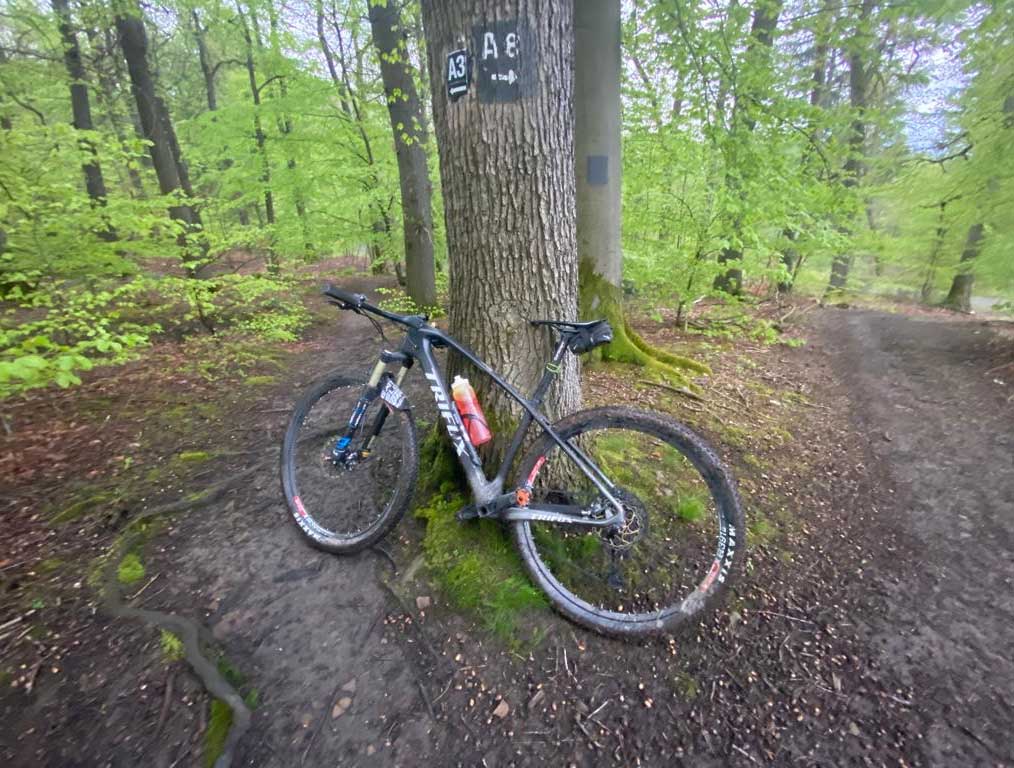
For avid mountain bikers, finding the right frame for their bike is crucial for their overall performance and experience on the trails. Unfortunately, high-quality frames often come with steep price tags, which can be discouraging for budget-conscious individuals. That's where the Trifox 29er Carbon MTB Hardtail Frame MFM200 comes in. This frame is known for its durability, stability, and versatility, making it a top choice for those who want an affordable hardtail frame that can hold its own on any trail. 1. Lightweight and durable: One of the biggest perks of the Trifox 29er Carbon MTB Hardtail Frame MFM200 is its lightweight design, which makes it easy to maneuver through technical terrain. The frame is made of high-quality carbon fiber, which not only adds to its lightweight feel but also makes it incredibly durable and long-lasting. Despite being a budget-friendly option, the Trifox frame doesn't sacrifice quality for cost. 2. Versatility: The Trifox 29er Carbon MTB Hardtail Frame MFM200 is incredibly versatile, as it allows you to swap out the quick-release skewer and the thru-axle skewer depending on the style of derailleur hanger you have. This makes the frame compatible with a wide range of other bike components, allowing you to customize your ride to your specific needs. 3. Great for climbing: Another notable advantage of the Trifox 29er Carbon MTB Hardtail Frame MFM200 is its climbing prowess. The frame's steep head angle and short chainstays make climbs feel easier and more efficient, allowing you to tackle tough ascents with ease. 4. Smooth ride: Despite being a hardtail frame, the Trifox 29er Carbon MTB Hardtail Frame MFM200 manages to provide a smooth and comfortable ride. This is thanks to its well-designed geometry, which balances out the stiffness of the carbon fiber frame with ample shock absorption, resulting in a ride that's responsive and enjoyable. 5. Great value: The Trifox 29er Carbon MTB Hardtail Frame MFM200 is a great value, especially when compared to other high-end carbon fiber frames on the market. Not only does it offer excellent performance, but it comes in at a fraction of the cost of some of its competitors. If you're looking for an affordable yet high-quality hardtail frame, the Trifox is definitely worth considering. Conclusion: The Trifox 29er Carbon MTB Hardtail Frame MFM200 is an excellent choice for mountain bikers who want a versatile, durable, and affordable hardtail frame that can handle the toughest terrain. Its lightweight design, versatile skewer options, climbing prowess, smooth ride, and great value make it a standout option in the crowded mountain bike frame market.
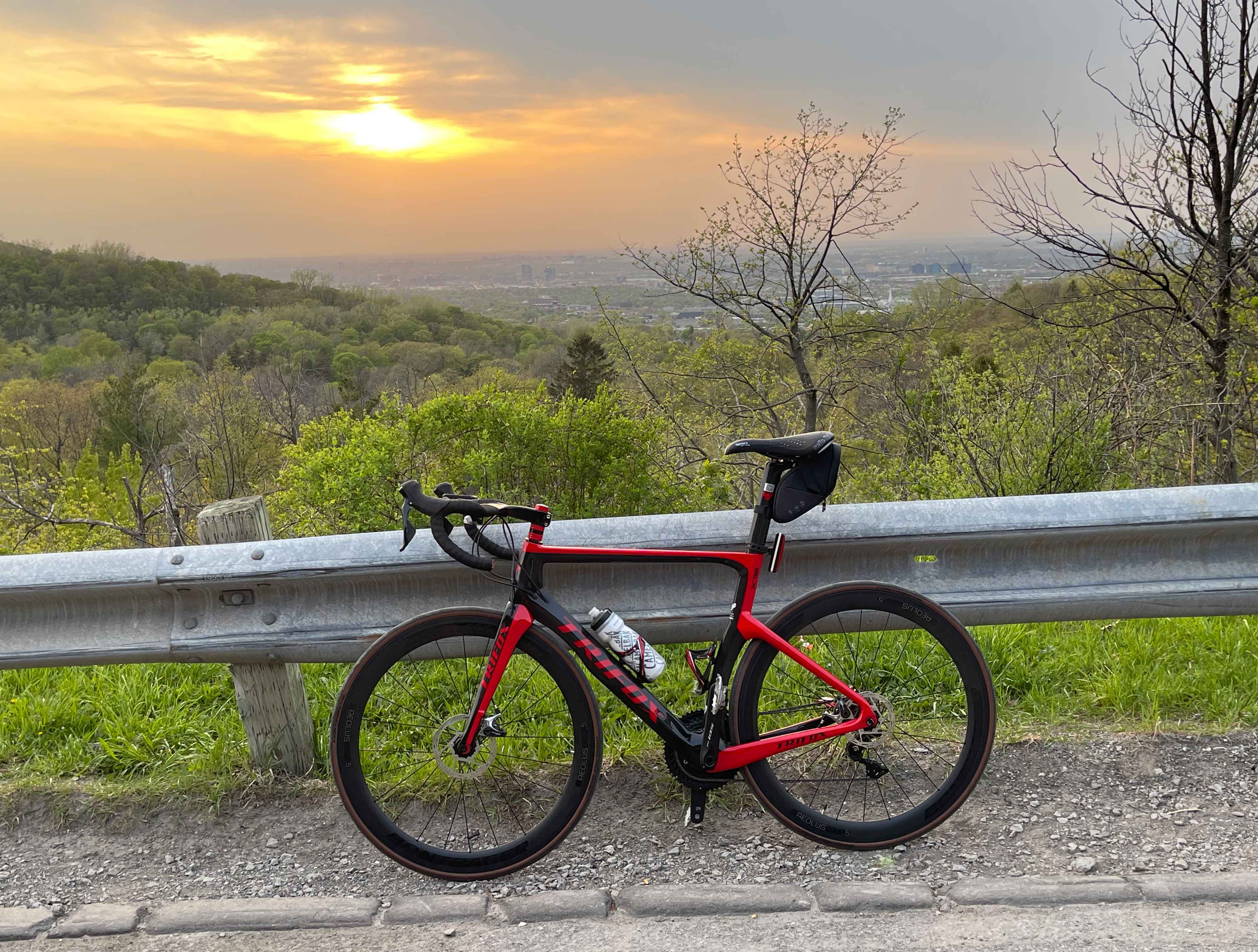
A well-fitting road bike is essential not only for comfort but also for performance and safety. One of the crucial factors in determining the proper fit is the size of the frame. Choosing the right measurement can make a significant difference in your riding experience, especially if you're planning to go long distances. 1. Understand the Frame Size: Before measuring, you need to know the different types of frame sizes that are available. Road bike frames are measured based on the length of the seat tube, which is part of the frame that supports the seat post and saddle. The measurement is usually in centimeters, and it indicates the distance from the center of the bottom bracket to the top of the seat tube, where it meets the top tube. The size typically ranges from 44cm to 66cm and can be labeled as XS, S, M, L, XL, or XXL, depending on the brand. 2. Measure Your Height: The next step is to determine your height accurately. Stand against the wall, take off your shoes, and place a book or a ruler on top of your head. Measure the distance between the floor and the book or ruler, and record the measurement in inches or centimeters. This measurement will help you determine the frame size that best fits you. 3. Use a Size Chart: Once you have your height measurement, you can use a size chart to match it with the appropriate frame size. Most bike manufacturers provide size charts that recommend a frame size according to the rider's height. These charts can vary slightly from brand to brand, so make sure to check the specific manufacturer's website for accurate measurements. 4. Calculate the Standover Height: The standover height is the clearance between the top tube and the ground when you're standing over the bike. It should be at least one to two inches or two to four centimeters for proper maneuvering and safety. To measure this, straddle the bike with both feet flat on the ground and measure the distance between your crotch and the top tube. Make sure you're wearing the shoes you plan to ride with during this measurement. 5. Test Ride Your Bike: Once you've determined the appropriate frame size, it's time to test ride your bike. A proper test ride should be at least 20 minutes long, and you should wear the same shoes and clothes that you plan to use when cycling. Check for comfort, handling, and overall fit. If the bike doesn't feel right, you may need to adjust the saddle, handlebars, or stem to achieve a more comfortable and efficient riding position. Conclusion: Choosing the right frame size is crucial for an enjoyable and safe cycling experience. Use these steps to measure a road bike frame size by height, and you'll be well on your way to finding the perfect fit. Remember that measurement is not the only factor in finding the right fit, so don't forget to test ride your bike and make necessary adjustments for maximum comfort and performance on the road.
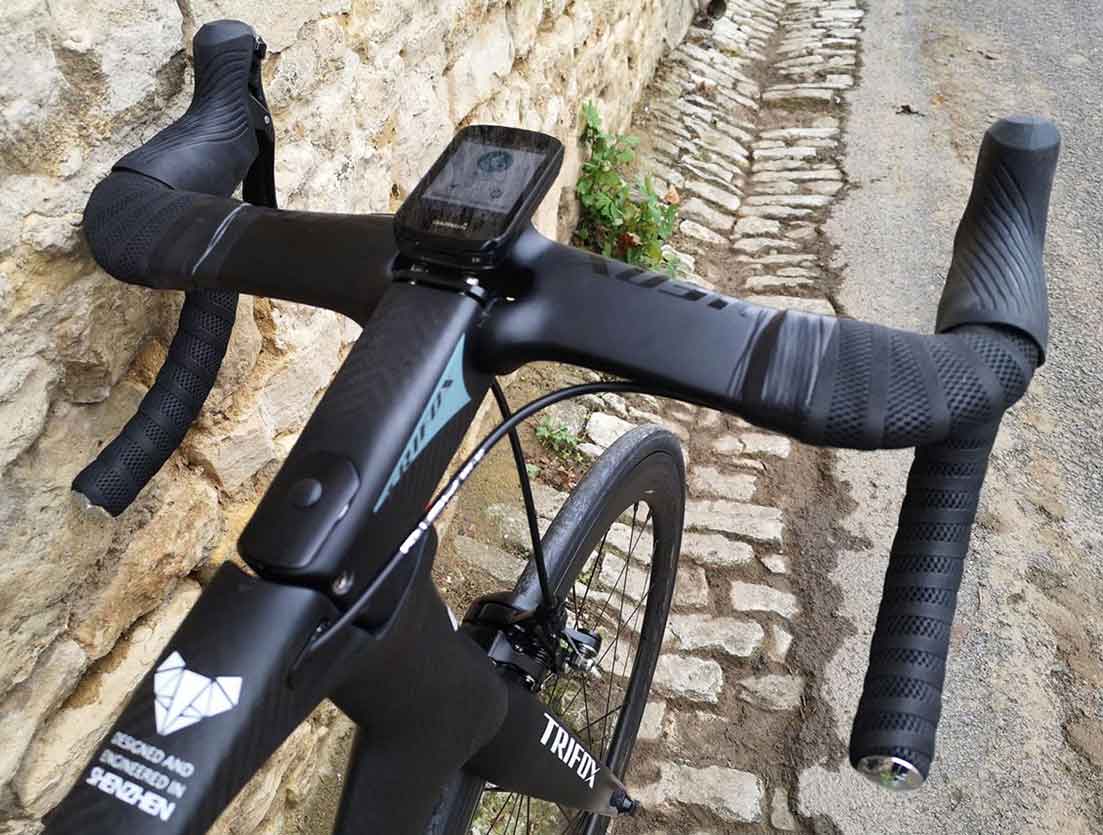
One of the easiest and most effective ways to improve your road bike's performance is by upgrading your handlebars. Aero handlebars, in particular, are designed to reduce drag and improve your aerodynamic position, allowing you to ride faster and more efficiently. Among various types of aero handlebars, carbon road bike handlebars have become increasingly popular due to their lightweight and stiffness. 1. TC20AF Aero Handlebar The TC20AF is a compact road bike drop bar with aerofoil-shaped tops that perfectly complement the latest aero road bikes. The tops feature a new aerofoil shape design, enhancing your bike's aerodynamic properties. Additionally, the handlebars are internally routed to minimize drag and offer a sleek appearance. The cable routing setup is compatible with both manual and electronic gear systems to ensure reliability while riding. Moreover, the handlebar comes with a stopwatch bracket that is perfectly compatible with Garmin and Bryton's stopwatches. This feature enables you to keep track of your time, distance, and speed conveniently while riding. 2. TC20UL Aero Handlebar The TC20UL handlebar is made of carbon fiber, making it lightweight and durable. Its internal cable routing design allows for a clean and organized cockpit, reducing air resistance. The handlebar has a unique design that sinks in the middle and lifts at the ends, improving your riding posture and making long-distance riding comfortable. The AERO uplift breaking wind design of this handlebar ensures maximum streamlined shape, reducing drag and improving aerodynamics. This handlebar is perfect for riders who enjoy road, gravel, and cyclocross riding due to its versatility and unique design. Benefits of Carbon Road Bike Handlebars Carbon fiber has become increasingly popular in the cycling industry due to its lightweight and exceptional stiffness. Carbon road bike handlebars provide riders with a comfortable ride, reducing road vibrations and improving responsiveness. The handlebars are also durable and long-lasting, making them an excellent investment for avid cyclists. How Aero Handlebars Improve Riding Performance Aero handlebars improve your riding performance by enhancing aerodynamics and reducing drag. They allow you to achieve a more aggressive position, reducing wind resistance, and enabling you to achieve greater speeds with less effort. Aero handlebars also improve your bike's stability, making it easier to handle and control. Conclusion: Upgrading your road bike with aero handlebars can have a significant impact on your riding performance. Carbon road bike handlebars offer lightweight, stiffness, and durability, making them an ideal choice for avid cyclists. The TC20AF and TC20UL aero handlebars are great options for riders looking to enhance their bike's aerodynamics and take their cycling experience to the next level. Consider investing in a pair of aero handlebars to add speed and efficiency to your riding.
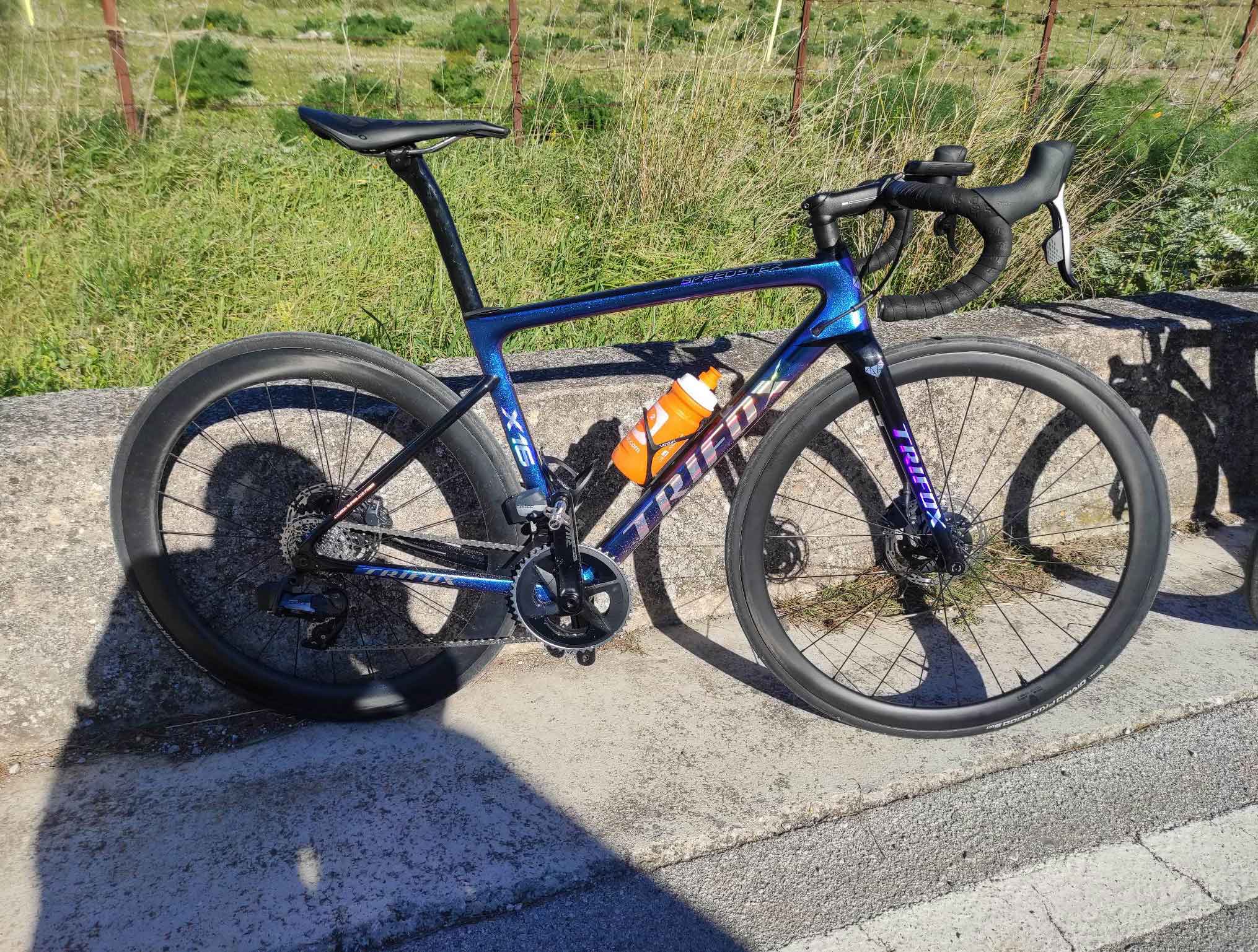
Do you have an old bike lying in your garage that needs some makeover? Painting your bike frame is an excellent way to give your old bike a new look without breaking the bank. Even if you’re new to the painting game, painting a bike frame is an easy and fun DIY project that anyone can do. With just a few tools and some basic knowledge, you can paint your bike frame and get a professional-looking result. 1) Prepare your bike frame: The first and most important step towards painting your bike frame is to prepare it properly. This means removing all the components such as wheels, handlebars, and other bits and pieces. You'll also need to clean the frame thoroughly to remove any dirt, rust, or grease. Use a degreaser to get rid of any stubborn dirt and grime. Afterward, sand down the entire frame with fine-grit sandpaper, and clean it again with a microfiber cloth. 2) Choose the right paint: The next step is to choose the right paint. You can use either spray paints or brush-on paints to paint your bike frame, depending on your preference. Spray paint is quick and easy, but it requires more preparation, whereas brush-on paint is more time-consuming but gives better results. There are many colors and finishes available for bike paints, so choose a color that suits your style and personality. 3) Apply paint to your bike frame: Before applying paint, it's important to cover any parts of your bike frame that you don't want to get paint on. Use masking tape, newspapers, or old rags to cover those areas. Also, make sure to apply paint in thin layers to avoid drips and runs. Work in a well-ventilated area, preferably outdoors, to prevent inhaling fumes. Wait for each coat of paint to dry, and sand it lightly before applying the next layer. Repeat this step until you get the desired finish. 4) Dry and Reassemble: Once you're happy with the results, allow the paint to dry completely. This can take anywhere from 24 to 48 hours, depending on the weather conditions. Once the paint is dry, you can reassemble the bike, but be careful not to scratch the paint. Attach the wheels, handlebars, and other components back onto the bike frame. 5) Finish with a clear coat: The last step is to apply a clear coat to protect your newly painted bike frame. The clear coat gives a glossy finish to your bike and protects the paint from chipping and fading. Again, wait for each layer to dry before applying the next one. Conclusion: Painting your bike frame can be a fun and easy DIY project that can breathe new life into your old bike. With proper preparation, the right tools, and some patience, you can achieve a professional-looking finish that will have your friends marveling at your bike's new look. So, go ahead and try painting your bike frame, and have some fun while you're at it!
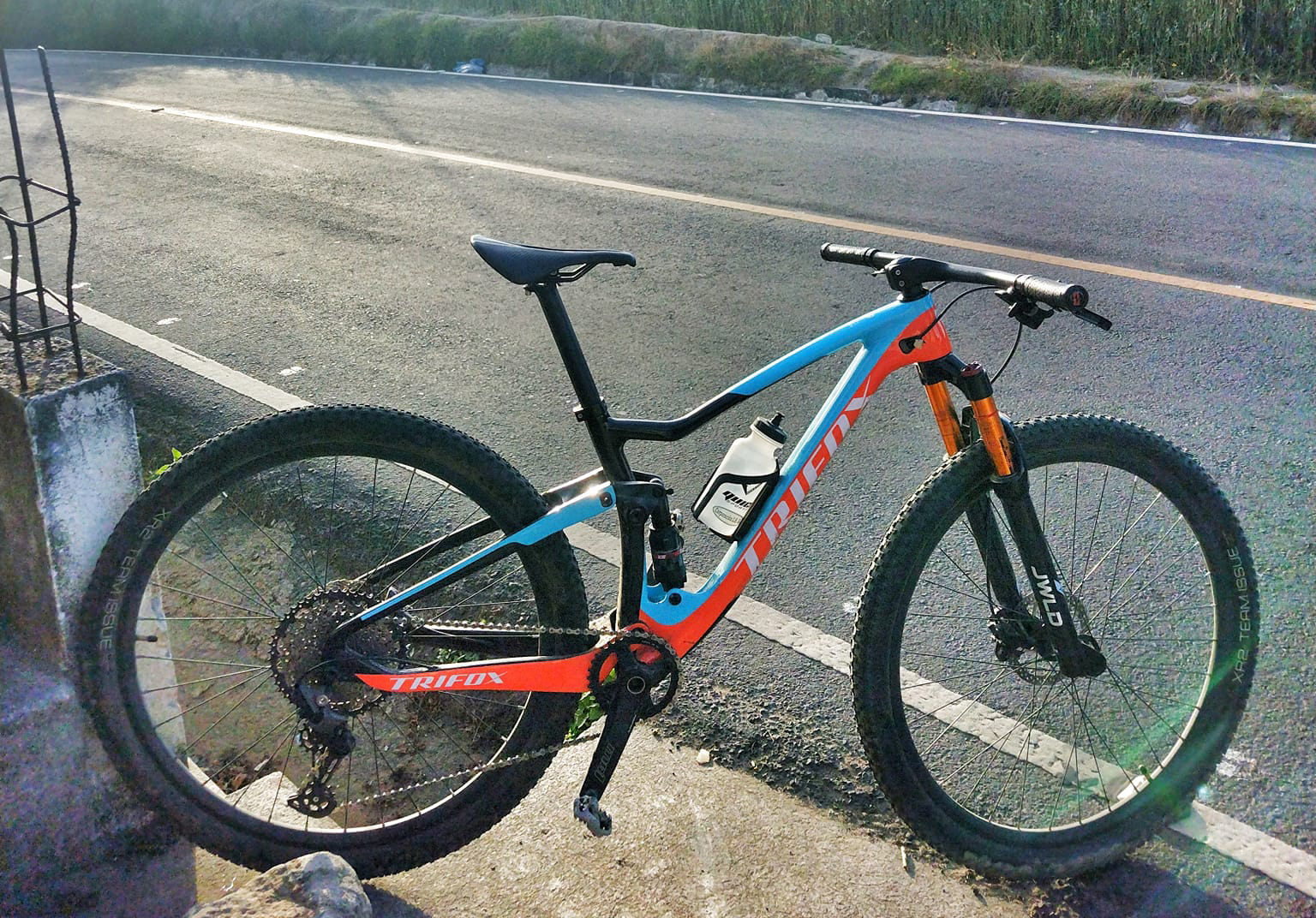
If you're a cycling enthusiast, you know the importance of upgrading your bike components to improve your ride quality. One of the most popular upgrades is converting your quick-release hub to a thru-axle. This is because a thru-axle is significantly stiffer and more secure than a quick-release mechanism. Step 1: Check if Your Hub is Convertible The first step is to check if your hub is convertible. This means that it has the potential to be transformed from a quick-release hub to a thru-axle through the use of an adapter. You can easily find this out by checking your hub's specifications or consulting a bike mechanic. If your bike hub is not convertible, then, unfortunately, you cannot make the switch. Step 2: Choose the Right Adapter If your hub is convertible, the next step is to choose the right adapter. Adapters come in different sizes and lengths, so it's important to select the one that fits your hub and fork. You can find the right adapter by checking your bike manufacturer's website, contacting a bike dealer, or simply browsing online. Step 3: Remove the Quick-Release Parts Once you have the right adapter, you can start removing the quick-release parts from your hub. This should be done carefully, as you don't want to damage any of the components. Unscrew the quick-release skewer, and remove any springs or washers that might be attached to it. Also, remove the end caps of your hub. Step 4: Install the Thru-Axle Adapter With the quick-release parts removed, you can now install the thru-axle adapter. This is done by inserting the adapter into the hub and securing it using bolts or screws. It's important to tighten the bolts or screws properly to ensure that the adapter is securely attached to the hub. Step 5: Install the Thru-Axle Lastly, you can install the thru-axle into the adapter. This is done by simply sliding the thru-axle into the adapter until it locks into place. Tighten the thru-axle securely, and make sure it's properly aligned. Once you're done, you're ready to hit the road with your new and improved bike! Our best selling hubs include these: bike hub M827, bike hub M821 Converting your quick-release hub to a thru-axle may seem daunting, but it's actually a simple process. If you follow the steps we've outlined in this blog, you'll be able to make the switch with ease. Remember, this upgrade will significantly improve your ride quality, so it's definitely worth the effort. Happy upgrading! Please check the product details in detail to get the bike hub you want!

















